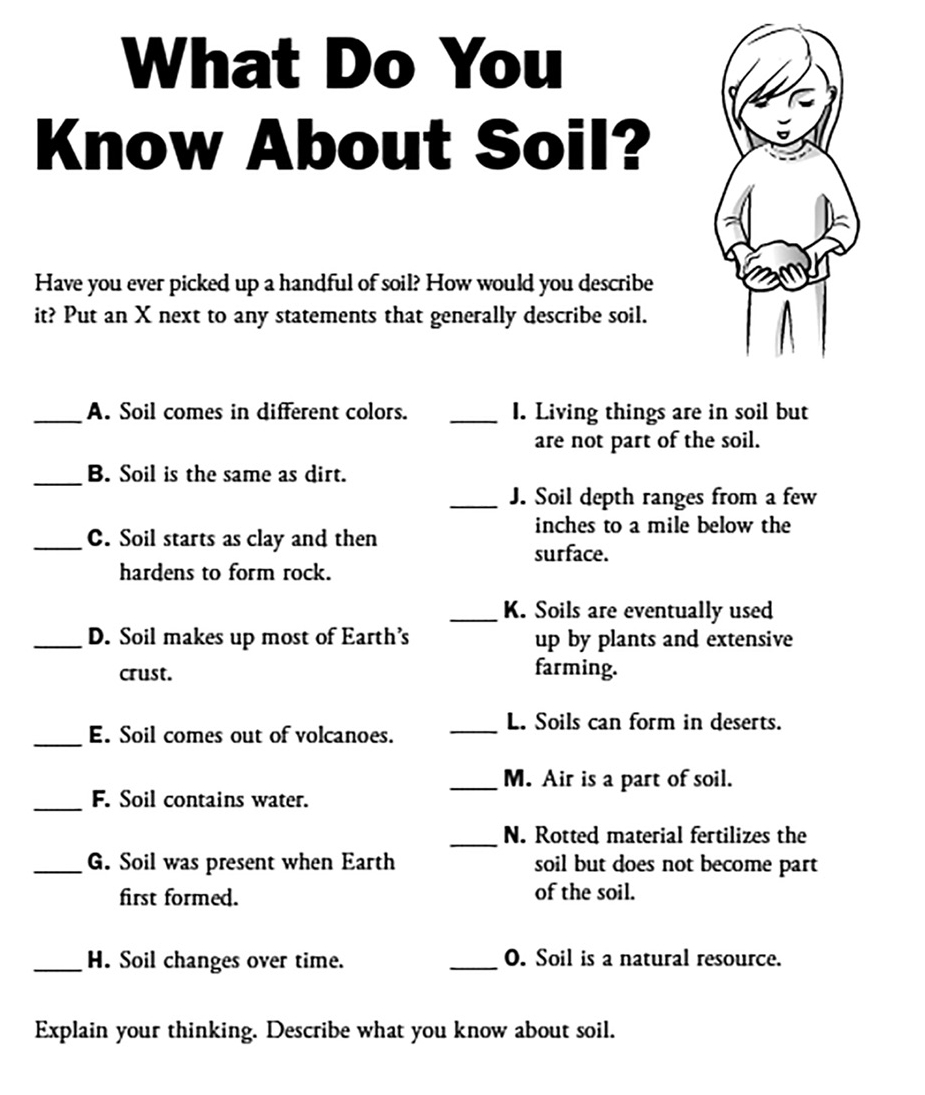feature
What Do You Know About Soil?
Using Ideas Inventory Probes
Science and Children—July/August 2022 (Volume 59, Issue 6)
By Page Keeley

Developing scientific literacy in the elementary grades includes opportunities for children to become familiar with Earth’s materials and systems. Children learn about Earth’s systems—the geosphere, hydrosphere, atmosphere, and biosphere, and how they interact. Within each of these systems, children explore the components that make up that system. One of these systems, the geosphere, is made up of components such as solid and molten rock, soil, and sediments that children can investigate firsthand or virtually. Soil is one of the components that many children have experiences with outside of the classroom. They often formulate initial ideas about soil through their everyday interactions with their environment. Sometimes these ideas are not scientifically correct and can be hard to change if teachers are not aware of their students’ thinking.
Before developing a set of lessons about soil, consider inventorying students’ initial ideas about soil. What do your students know or think they know about soil? The “What Do You Know About Soil?” probe (Figure 1) is an example of an ideas inventory probe (Keeley and Tucker 2016). An ideas inventory probe is one of the 12 types of formative assessment probes in the Uncovering Student Ideas in Science series. An ideas inventory probe differs from other probes by eliciting multiple ideas about concepts and phenomena related to a curricular unit or set of multiple lessons. It is a type of conceptual inventory. The data from the probe allow the teacher to make informed adjustments to lessons such as knowing which students may need more support, what to spend more time on, whether the planned activities will likely be effective in developing conceptual understanding or need to be modified, or whether additional activities need to be added.
There are several ways to use this probe. One is to first have students complete it individually, providing a written record of students’ responses that you can then analyze later for class patterns of understanding or misunderstanding as you plan your set of lessons. Completing it as an individual also provides think time and draws out students’ initial ideas before they have an opportunity to change them through discussion with others. After students have had an opportunity to individually think through and record their ideas, provide an opportunity for students to discuss their ideas with a partner or in small groups. Each of the statements can also be printed on cards and used with the card sort strategy where students sort the cards into statements that describe soil, statements that do not describe soil, and statements that we are still wondering about (Keeley 2016). Through talk, students may change their ideas as they listen to others or additional questions may arise. It also creates engagement and anticipation for the lessons and a desire to find out. Small-group talk can be followed by a whole-class discussion of statements that they can agree on as well as “what do we need to find out about soil and how can we find out?”
After students have had the opportunity to learn through carefully planned and targeted instruction, consider returning the original probe to each student. This time, using a different color pen or pencil, they can change their answer choices and give a reason for each change. This provides additional assessment information on the extent to which students now understand the concepts and phenomena related to soil as well as provides an important reflective opportunity for students to recognize how their thinking changed.
“What Do You Know About Soil?” is just one example of an ideas inventory probe in the Uncovering Student Ideas series. Once you become familiar with this type of probe, consider developing your own inventory prior to planning or implementing a set of lessons. Select the concept children will be learning about in your curriculum. What ideas will children be using to understand the concept? What phenomena can be explained using ideas about the concept? Generate a list of scientifically correct statements as well as statements that reflect commonly held misunderstood ideas children may have. The data from this type of probe can help you make informed adjustments to your curriculum prior to enacting it ●.
Page Keeley (pagekeeley@gmail.com) is a science education consultant and the author of the Uncovering Student Ideas in Science series (http://uncoveringstudentideas.org).
Assessment Earth & Space Science Literacy Elementary


